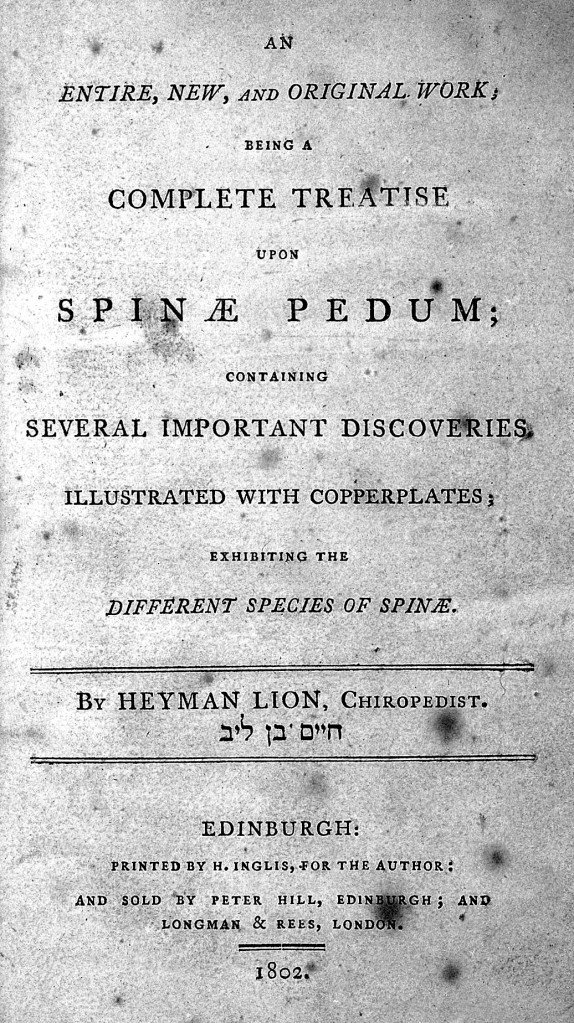
Going back to the time before the first synagogue was founded we can identify 18 Jews in the register of aliens that foreigners were obliged to complete in 1794. Among them was Hyman Lyon. He and his wife lived in the Canongate, further down the High Street from here. He is famous for two reasons – the first was his book of over 400 pages Spinae Pedum – important discoveries in Chiropody – and the second was his purchase in 1794 from the City Council for £17 of a plot on Calton Hill as a burial ground for himself and his wife. The mausoleum still exists, but it was lost for many years until in 2013 it was rediscovered, buried under the slope behind William Playfair’s 1818 Observatory. AOC Archaeology surveyed it and produced a number of images. It is possible to make out what appear to be the coping stones on the path round the observatory whose dome is visible from here. This was a never a community cemetery – we will stop at the first one later in the walk. Lyon was also infamous because he was one of the defendants in a libel action where, according to the records ‘all parties were Jews’. Rose Nathan accused others of ‘spreading rumours that she had been found naked in bed with other men…’. She succeeded in defending her reputation – but this public airing of their affairs must have caused quite a disturbance in this tiny community down the Canongate. Now as will continue down, what is now St Mary’s Street, but before it was rebuilt as part of the Sanitary improvements of 1865 onwards was St Mary’s Wynd. Henry Littlejohn, Edinburgh’s first medical officer of health, set about improving the sanitary condition of Edinburgh by new housing developments and you can see a plaque on the left as we walk down St Mary’s Street to commemorate this.
You must be logged in to post a comment.